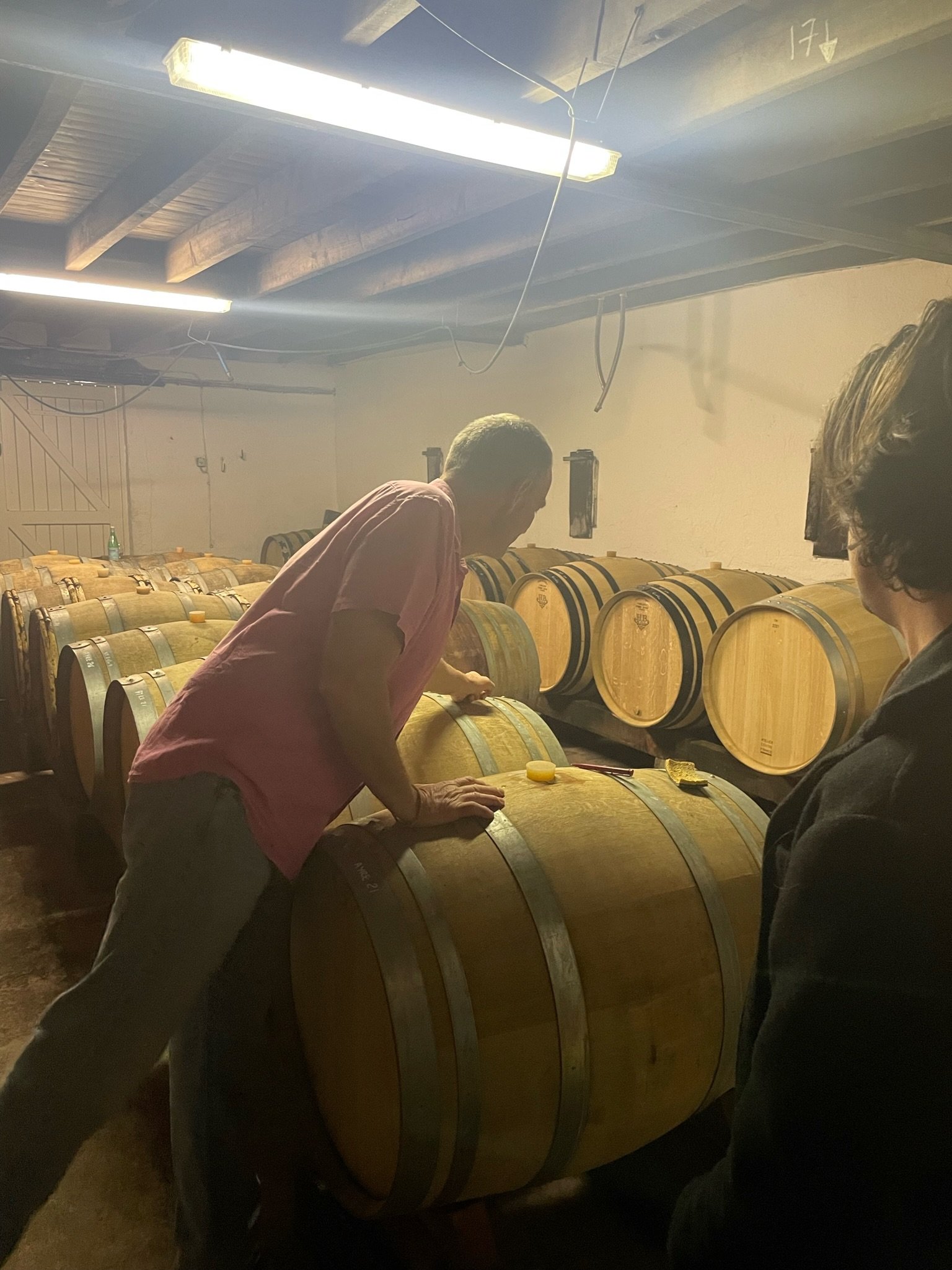Le Tour de Loire vol. 2 (Clément Baraut)
Onward and upward through the great BBQ tour of 2022. After a wonderful visit with our dear friends Toby and Julie, we were welcomed at the cellar of Clément Baraut in Mûrs-Erigné, just outside of the Bonnezeaux AOC. What followed was a meal and tasting so epic, the physiology of the team had been theretofore altered, requiring copious amounts of pork and blue beef for the remainder of our French excursion. Chenin too. All culminating in "the worst wine I ever made," which was not too bad at all.
We tasted back through 3 or 4 vintages, getting an idea of a more recent history of the domaine, and in particular his negociant project Herbes Folles, and its iterations the past few years. On and off, a lot of this fruit comes from the estate, and herein lies the history of the name, Crazy Grass (vegetation). Clément is a follower of the 19th century scientist and scholar, Goethe, who gave him the belief that plants have a sensitivity and language like animals do. They don't like to be cut or pruned, and operate best as they grow in wild nature. As a result, the vines sort of grow free in a wild way: an "uncultivated" garden.
Clément doesn't trim leaves, do much in the way of pruning, or practice the universal technique of ébourgeonnage that's happening without exception at every vineyard we visit around this time of year. This is the practice of removing new shoots sprouting from the wood of the vine in spring. The idea is to direct energy into the branches grape growers have selected for fruit and for the following year's growth. As a result, Clément's vines have a number of shoots or branches that grow as they like. He pointed out some wild vines around the forest and told us that wild vines in nature never produce grapes with a potential alcohol of 14, 15, or 16% like we see more and more with climate change. It is not a natural part of the physiology of the plant. Our cultivation is what makes this possible, and so Clément's wines don't reach these heights of alcohol the way a lot of his neighbors' do.
He told us, "Plants take water, sunlight and minerals and make patterns with them." This is his understanding of viticulture and his justification of the hands-off attitude he takes to vineyard work. It has made him no friends in the AOC system, but his wines are more transparent and more of their place than any others in the region. There's a negative quality of absence that marks a lot of his wine. The water, sunlight, and minerals hanging together in a new pattern, unfettered and wild. A famous place like Savennières evokes a lot for us wine professionals, but Clément's wines show that a lot of these concepts are a result of artifice, and not what nature is happy to give on its own. Romantic stuff!
Lots of wonderful memories with The Druid will float around my head for a long time. We'll see more of these magical wines in the fall, but as a reminder we still have a bit of Clément's macerated cuvee, as well as his sweet Bonnezeaux cuvee which lost its AOC status for being 1 degree in alcohol shy of the rule. The ridiculousness of that fact does well to sum up the antiquated philosophy of the AOC system, and the value of curious minds like M. Baraut's.






